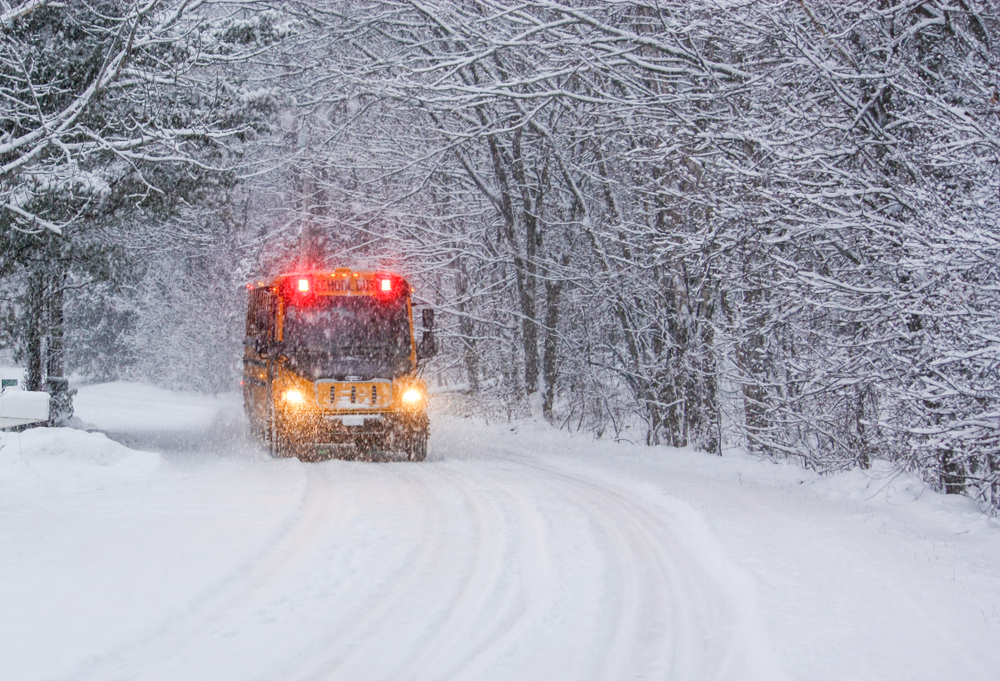Although the requirements on the number of instructional days and/or hours throughout the school year differ from state to state, most states require 180 days of instruction.
Even for the states that require more or less instructional time, their numbers are usually close to 180 days.
Since the 1980s, states have been seeing a gradual increase in the minimum length of instructional days or hours that students should be in school.
Since then, more than a dozen states have increased their minimum, while only a handful of states have decreased it.
Table of Contents
How do the requirements vary by state?
Today, seven states (such as Arkansas, Maine, and North Dakota) have a minimum number of instructional days between 170 and 178 days, while four states (Colorado, Kansas, Minnesota, and Missouri) have their own criteria for the number of instructional days.

The number of days can range anywhere from below 170 to above 180.
Currently, seven states don’t measure instructional time by the number of days. Instead, their school year is measured in hours. These states are Delaware, Montana, Nebraska, New Mexico, Oregon, Texas, and Wisconsin.
As of today, twenty-nine states, as well as the District of Columbia, require 180 instructional days in the school year.
However, some of these states are more flexible when it comes to meeting the requirements for the amount of instructional time.
For example, ten of these states allow their districts to determine how they will operate during the school year. The districts can either meet the minimum number of hours required of them or fulfill the 180-day requirement.
These states include Alabama, Florida, New Hampshire, Oklahoma, Pennsylvania, and Virginia.
Lastly, three states have no required school days or required school hours. Instead, a lot of discretion is left to the school districts, which can decide the number of days or hours for the school year.
The districts also decide when the school year starts and ends, as well as the number of hours that constitute a school day.
As long as the schools start no earlier than August and end no later than June, the districts can make the decision. These three states are Idaho, Ohio, and South Dakota.
How do states factor in inclement weather?

Some districts in certain states have to contend with inclement weather, most commonly snowstorms in the Northeast and hurricanes in the South.
Many districts have a set number of what we would call “inclement weather makeup days.”
These days have already been built into the school calendar so that students can still end the school year on a reasonable date, as well as have a fixed graduation date.
During cases in which unusually bad weather exceeds the pre-allocated makeup days, school boards and districts have to get together and come up with alternatives.
These options include extending the last day of school to a later date, lengthening the school day, canceling planned holidays, and holding school on Saturdays.
Extending the last day of school
An online poll conducted in Des Moines, Iowa, shows that its residents – when asked about how they prefer to make up for an unusually high number of snow days – ranked “adding days to the end of the school year” in fourth place out of the poll’s six options.
While it’s a viable option for some, it’s not among most people’s top choices. However, there may be consolation in the fact that the number of extra days usually doesn’t exceed one or two days.
Lengthening the school day

When districts and school boards opt for longer school days, the school day usually isn’t extended by more than one hour.
According to that same Iowa poll, “lengthening the school day” was the second most popular option out of the six choices.
The main issue coming from this option would be conflicting with predetermined school bus schedules.
Canceling planned holidays
In the state of Virginia, school districts have, in previous years, held classes on Presidents’ Day, a day originally scheduled as a school holiday.
Other school districts have made up for unexpected snow days by reducing their spring break by one day.
Holding school on Saturdays
Although conducting school on Saturdays is a workable option for some students, other students and their parents strongly oppose the idea, often for religious reasons.
For some religious groups, Saturday is their day of worship, so going to school on Saturdays isn’t a possibility for them.
In addition, Saturday is the day during which students often take the SAT or ACT.
What happens on major holidays?

All public and private schools in the United States observe federal and state holidays, closing on these special days.
These holidays include:
- Thanksgiving – Celebrated on the fourth Thursday of November, Thanksgiving is a national holiday believed by many Americans to be based on the 1621 harvest feast shared by the Pilgrims of Plymouth and the Wampanoag people. Americans usually spend their Thanksgiving holiday with loved ones, typically at large family gatherings, celebrating the harvest and all the things they are grateful for.
- Christmas – Historically a celebration of the birth of Jesus Christ, Christmas, which takes place on December 25, is one of the most popular holidays in the US. Often celebrated as a secular family holiday, now Christmas is observed by Christians and non-Christians alike, reinforcing people’s sense of community.
- Spring break – Spring break, which normally lasts one week, usually falls somewhere in March or April. Popular spring break destinations for university students include Cancun, Miami Beach, New Orleans, and the Bahamas.
- Summer break – Lasting roughly twelve weeks, summer break is the longest break of the year, beginning when the school year ends (May or late June) and ending at the start of the next school year (traditionally after Labor Day in September).
- Religious holidays – Some private schools in the US observe religious holidays, such as Good Friday (Christian), Rosh Hashanah and Yom Kippur (Jewish), and the first and second day of Ramadan, Eid Al-Fitr and Eid Al-Adha (Islamic).
- Independence Day – Celebrated on July 4, Independence Day is the biggest national holiday in the US. This holiday commemorates the US’s official proclamation of independence from Britain, which took place on July 4, 1776. Festivities range from events like firework shows, parades, and concerts to the more relaxed family and friend get-togethers and barbecues.
- Labor Day – Labor Day takes place on September 3. This annual holiday recognizes and celebrates the achievements of the American labor movement, which led to efforts to put an end to child labor, as well as provide health benefits and aid to injured or retired workers.
As you can see, the requirements regarding the amount of instructional time throughout the school year vary by state.
And while some states measure the amount of time students spend in school by the number of days, others measure by the number of hours.
There are some states that allocate governing authority to their districts, allowing the districts to determine how schools will operate throughout the year.
Many states factor in inclement weather, using built-in “inclement weather makeup days” to ensure their students finish the school year on time.
In cases of extreme weather, during which schools are closed for longer-than-normal periods of time, alternatives, like holding school on Saturdays, need to be considered.
Lastly, there are major national and state holidays that public and private schools observe. On these holidays, the schools are closed, and their students are free to celebrate these holidays with their friends and families.

















